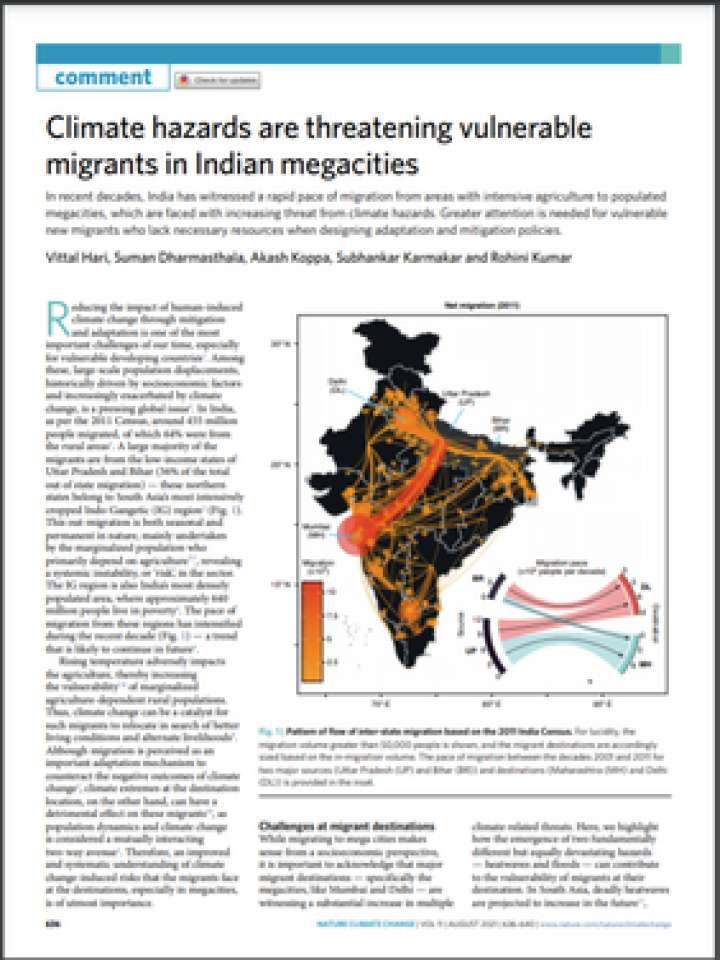Climate hazards are threatening vulnerable migrants in Indian megacities
This publication covers reducing the impact of human-induced climate change through mitigation and adaptation. This is one of the most important challenges of our time, especially for vulnerable developing countries. Among these, large-scale population displacements, historically driven by socioeconomic factors and increasingly exacerbated by climate change, is a pressing global issue. In India, as per the 2011 Census, around 455 million people migrated, of which 64% were from the rural areas. A large majority of the migrants are from the low-income states of Uttar Pradesh and Bihar (36% of the total out of state migration) — these northern states belong to South Asia’s most intensively cropped Indo-Gangetic (IG) region. This out-migration is both seasonal and permanent in nature, mainly undertaken by the marginalized population who primarily depend on agriculture, revealing a systemic instability, or ‘risk’, in the sector.
While adaptation measures had generally taken a backseat to mitigation efforts in the fight against climate change, in India, there is an emerging cognizance of the need to simultaneously undertake mitigation and adaptation efforts, as outlined in its National Action Plan for Climate Change. Cities — specifically in the global south — despite having increased footprint of carbon emissions, have enormous potential for transformational adaptation. In India, many cities have endorsed climate adaptation actions — for example, Ahmedabad, a city prone to intense heatwaves, has evolved a comprehensive Heat Action Plan. Mumbai, on the other hand, where the influx of migrants is more pronounced, faces myriad climate-related challenges and lacks the requisite sectoralor city-level adaptation policies. While there are a few government schemes that exist to reduce the vulnerability of these migrants, some only exist in the state of their domicile and are not easily portable to the states of destination. Therefore, concerted efforts should be devoted towards capacity building and adaptation actions to not only accommodate these migrants in the megacities, but also ensure that they can withstand the vagaries of climate-related hazards. While devising policies for climate mitigation and adaptation, special focus is needed for attenuating the vulnerability of the marginal migrants in megacities and other major destinations.
Explore further
